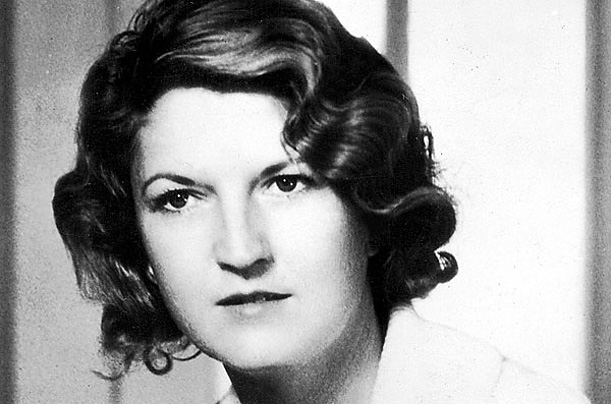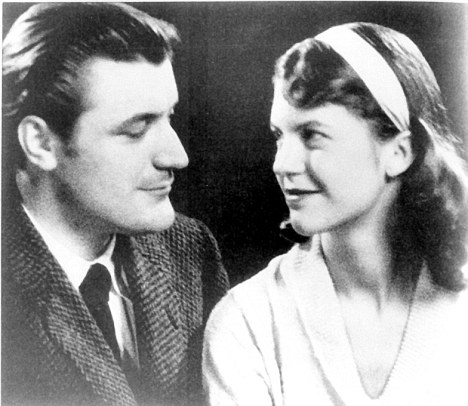The Muses: Zelda Fitzgerald & Co.
The literary incarnations of Zelda Fitzgerald are, perhaps, the original Manic Pixie Dream Girl. Though the term wasn’t coined by critic Nathan Rabin until over 50 years after Zelda’s death, the various characters based on her bring life, spirit, wealth and power to their chosen suitors.
Despite being an accomplished author and painter in her own right, Zelda is best remembered by the characters she inspired in her husband’s work: Daisy Buchanan in The Great Gatsby, Nicole Diver in Tender is the Night, and Judy Jones in Winter Dreams. It’s clear that F. Scott Fitzgerald envisioned these characters as unreachable muses – women who could, like all manic pixie dream girls, change a man’s fortune. The more complicated reality of their lives are only seen at the edges of the writing, blurred outside the viewpoint of the male characters. For example, Nicole Diver is a survivor of childhood sexual abuse, and Daisy Buchanan expresses frustration with limitations placed on women of her era.

Zelda Fitzgerald was clearly a woman attempting to escape the definitions placed on her as a love interest. She reclaimed her own life’s story from her husband’s interpretations with the publication of her novel, Save Me the Waltz. One of the reasons sci-fi and fantasy have so many female fans is because women in these genres often escape the confines of the 'muse' role. The unattainable princess in the castle. In honour of Zelda’s birthday, here are some other muses—badass ones who developed from their flat roles in a man’s story and became realistic characters.

Princess Leia, Star Wars
Princess Leia is first spotted as a mysterious figure in a hologram, almost like she's in a painting in a galaxy far, far away. “Help me, Obi Wan Kenobi, you’re my only hope,” she pleads. But once Luke Skywalker and Han Solo arrive on the Death Star to rescue her, she turns out to not be so hopeless indeed. “Aren’t you a bit short for a stormtrooper?” she asks her would-be rescuer. Princess Leia is far from an unattainable princess in a tower. She leads both the Rebellion’s military missions and is a diplomat, serving in the Imperial Senate. Darth Vader makes an off-hand comment in regards to her mercy missions.
Leia is far from an aloof leader. She becomes humanised throughout the films. While she does acquire a love interest in the form of Han Solo, she is also a keen judge of character (recognising that something is afoot in Cloud City with Lando Calrissian), a cool soldier under pressure (especially when holding a thermal detonator) and eventually, as a mother with a complicated relationship with a lost son. Princess characters are often similar to Zelda Fitzgerald’s literary incarnations—wealthy, spoiled and untouchable.
Yet Princess Leia—a great shot with a blaster—transitions from a hologram to a wise general, balancing her career and family life.

Minuet, Star Trek
The statue coming to life thing dates back to the Greek myth Pygmalion – perhaps a reminder that living, breathing women tend to have personalities, flaws, and priorities of their own, leading to far more romantic complications. Of course, the 24th century version of a programmed S.O. is clearly a hologram. It can be hard to resist tinkering with a holographic romance (just ask Captain Janeway), but during the temporary upgrade of the holodeck by Bynar aliens, Minuet pops to life.
Although created by Commander Riker to be a brunette (because blondes and jazz clubs don’t mix, apparently), Min is able to evolve. She learns French from the ship’s computer and is even able to give Picard and Riker information about an alien attempt to take over the Enterprise-D. Riker remarks that Minuet is too intelligent and unique for a hologram, implying a lack of imagination on Riker’s part. When an alien race later scans Riker’s memories, they assume she is too vibrant and alive to be a hologram and assume that she is Riker’s partner. She is a hologram who defies her programming to chart her own path, refusing to follow the story’s script.
She’s also unique. When Riker later tries to find her on the holodeck, she has disappeared. Rather than a stock character or jazz muse, Minuet demonstrates that she has the prerogatives of a person—including the choice to not come when called.

Saffron, Firefly
Upon first meeting Saffron, she seems in need of a feminist revolution. Sold off by her village as payment to the Firefly crew, and particularly their Captain, Mal Reynolds, Saffron is determined to follow and obey her husband. Several crew members remark that Saffron seems like the perfect wife. First mate Zoe looks confused when Saffron asks her if Zoe too will be preparing dinner for her husband, Wash. Saffron is subservient and pliant, like a woman out of an archaic male fantasy.
Her various victims seem to rarely pause to consider that this fantasy might indeed be too good to be true. Too late, it becomes clear to them that Saffron is only a fantasy. Playing on gullible men entranced by the idea of such a non-threatening, easygoing, non-confrontational partner, Saffron is a con artist, marrying men in order to relieve them of large sums of money.
It's interesting that the only time Saffron seems to let her guard down is with companion Inara, another character who creates fantasies, although the ones Inara spins are far more benign. Saffron serves as the best warning to audiences that belief in a one-dimensional, uncomplicated, subservient muses is not only ridiculous, but also quite dangerous. Oh and it can lead to being left naked in a trash compactor.





